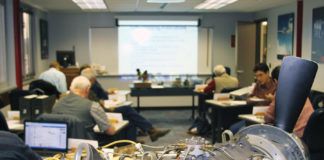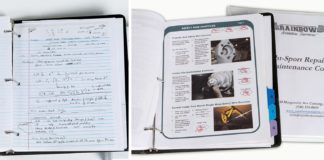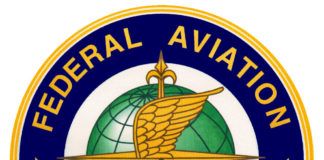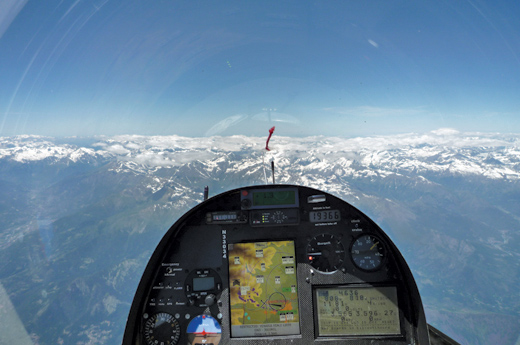
Sunseeker II nears 20,387 feet for a world solar-powered record.
Why would anyone want to fly a solar-powered airplane? The challenge of taking to the air in a solely solar-driven craft is rarely overcome, and only with airplanes that are tenuous in their abilities at best. But you’d have to see the beautiful pictures Eric Raymond took while crossing the Alps and overflying the Matterhorn, or view the images of a crowd in thrall to the giant Solar Impulse gracefully traveling the length of the main runway at the Paris Air Show, to understand the charm of such machines. You may then be smitten with the desire to own one yourself, despite their limits.
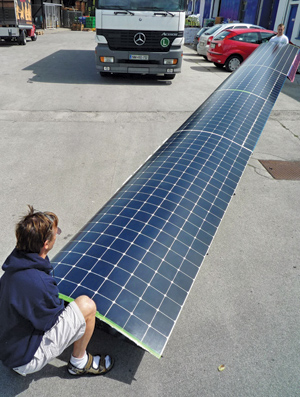
Thin, smooth Duo solar cells will enable the first two-seat solar aircraft to soar.
One limit is collecting what would otherwise be an illimitable power source. Every day, all day, the sun pours 100 watts of energy per square foot of the earth’s area on us. That’s about 438 kilowatt hours per year for each square foot, based on 12 hours of sunshine per day. The average American home consumes about 936 kilowatt hours each month, so the year’s energy requirements could be met with only 26 square feet collecting that sunlight.
That is, the requirements could be met if the sun struck that surface straight on, as if noon lasted all day. Most of us don’t live on the equator, and sunlight hits us with a glancing blow. Weather intervenes, and clouds cut down on available photons. Solar cells, at least commercially available ones, aren’t all that efficient, and even the best research models lose 60% of the available energy.
A Light Sport Aircraft, for instance, with 100 square feet of solar cells on its wing, could collect 10,000 watts if the sun were directly overhead. But the best solar cells would use only 4000 of those watts, hardly enough to stretch the glide on the average small plane, let alone give it the typical Rotax’s 100 horsepower necessary for takeoff.
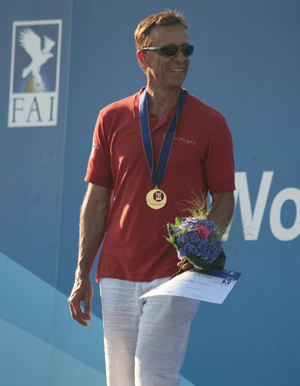
Eric Raymond displays the World Air Games gold medal for Best Experimental Aircraft. He also won world altitude and duration records.
All three currently flying solar aircraft are very big (to give enough wing area to gather sufficient sunlight), exceedingly light (to allow flight on limited power), and have batteries to store energy gathered over periods longer than their actual flight times. Let’s start small and work up.
The Sunseekers
Eric Raymond was an early adopter of solar technology, flying his incredibly light Sunseeker across the United States in 21 hops from San Diego, California, to Kitty Hawk, North Carolina, in 1990, an amazing story that I read about on pages A16 and A18 of the local paper over two days of that flight, despite what Raymond described as a “media circus” to EV World about his experiences with the press. The two longest legs of his flight had covered about 254 miles each—a record for over two decades—and his 16,000-foot altitude remained unchallenged for years.
Structural weight for Sunseeker was a feathery 100 pounds. NiCad batteries added 35 pounds. The ship totaled less than 200 pounds with amorphous, low-efficiency solar cells producing 1800 watts and a 2.5-horsepower brushless motor torquing a folding propeller. He had observed and learned much about keeping it light from German solar pioneer Günter Rochelt (see sidebar).
Sunseeker could take off using battery power, which in this instance was really stored sunlight. One of Raymond’s objectives was to avoid using any grid-based power in his flight across the U.S., something he achieved, maintaining altitude on solar power alone and recharging the small battery packs from excess sun energy collected. In many instances, especially the longer flights, he relied on thermals and soaring to make his day’s distance.
Not finding a great deal of financial support in his native land (the U.S.), Raymond went to Europe and found support in Switzerland, Poland and Slovenia with Sunseeker II, a slightly larger, more powerful version of the basic design with more efficient monocrystalline solar cells, a bigger motor and lithium batteries in place of the original NiCads.
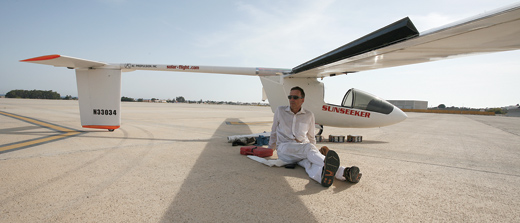
Raymond finds the only shade in Almeria, Spain.
He displayed Sunseeker II at the Friedrichshafen Aero Expo in 2009, winning well-deserved plaudits from the crowd and a Best of Show award. Leaving Germany, he flew over the Alps, crossing Switzerland and overflying the Matterhorn, one of his lifelong ambitions. At the Experimental Soaring Association Western Workshop that year, he told about flying under some high clouds that limited his power output and made crossing into Italy a dodgy business. Sunseeker was a big hit at the World Air Games in Turin, where Raymond was awarded a gold medal. Subsequent flights have shown the soundness of the design and given him the impetus to develop Duo, a two-seat solar-powered airplane that might reach series production.
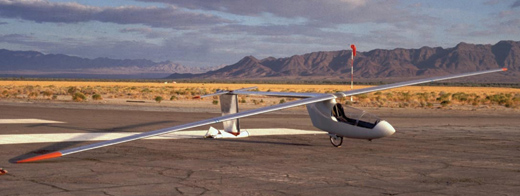
Sunseeker I, the airplane in which Raymond crossed the U.S. in 1990.
Its stats are a bit amazing. A 72.2-foot (22-meter) span, covered with 22%-efficient solar cells, powers and lifts a 594-pound airplane, which, even with two large passengers, still weighs only 1034 pounds. The low wing and span loadings allow a 20-kilowatt motor to fly its lucky occupants on the rays of the sun. We can look forward to seeing more on this amazing creation, maybe in time for this year’s Aero Expo.
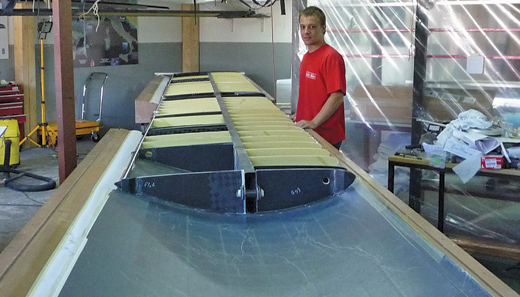
Duo wing construction shows an ultralight approach.
Icaré 2
Careful observers may be startled at the similarity of Stuttgart University’s Icaré 2’s wing to that of the Sunseeker Duo. Professor Rudolph Voit-Nitschmann allowed Eric Raymond to “borrow” the jig on which Icaré’s wing was constructed (though Raymond has reduced the area since first starting construction because more efficient solar cells became available).
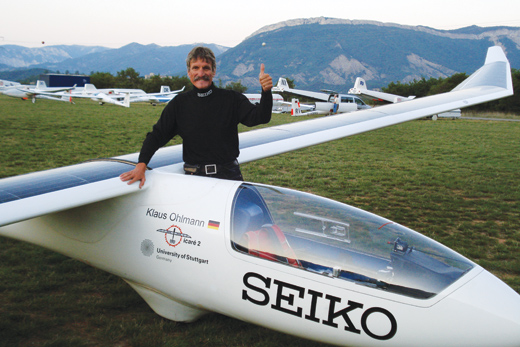
Klaus Ohlmann with his record-setting mount, Icaré 2.
Other figures are similar. Icaré’s wing area matches that of Sunseeker’s Duo at 269 square feet (25 square meters), with 82% of that (221.7 square feet or 20.6 square meters) covered with solar cells. It weighs only 580.8 pounds (264 kilograms), of which only 440 pounds (200 kilograms) are structural. The remaining pounds come from the motor, propeller, solar cells and four battery packs. Its sink rate of a little under 1.25 feet (0.39 meters) per second would leave it hanging in the air on a warm day.
Although it is powered by a 12-kW, 92%-efficient motor, it requires a mere 1.8 kW to maintain level flight. The 915-watt-hour batteries can manage to fly the airplane 20.9 miles (33.6 kilometers) if the solar array is disabled.
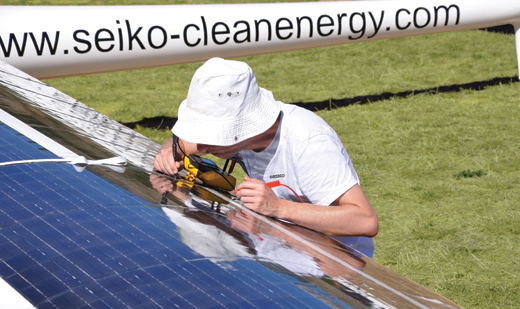
A mechanic checks the health of Icaré 2’s solar cells.
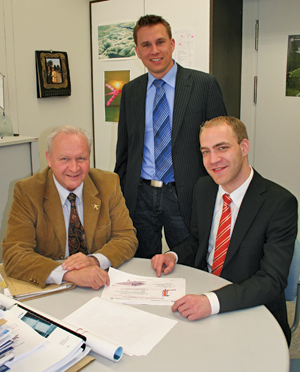
Icaré 2’s design team (l to r): Rudolf Voit-Nitschmann (project leader), Len Schumann and Steffen Geinitz. The same team worked on e-Genius, the second-place Green Flight Challenge finisher.
Jochen Ewald, the pilot in Icaré’s early stages, described the big plane’s characteristics, which are leisurely to be sure. “The best glide angle is about 40:1 at 61 kilometers per hour (38 mph), which gives nice, but slow, progress if the wind is not too strong. Stall speed is 45 kilometers per hour (28 mph), with the big glider going into a stable, shaking stall. During the flight tests, the big flying tailplane got a curved end to improve longitudinal stability. Without this, flying her must have been quite exhausting,” he said.
“To compare the Icaré 2 with today’s still-flyable gliders, the Slingsby T-21 (a pre-WW-II training glider) may be used: At about 60 km/h (37.2 mph) the Icaré 2 behaves like a T-21 flown close to minimum speed, but not so handy!”
Without solar help, the batteries could keep the big aircraft up for about 40 minutes, so longer flights require bright, nearly cloudless days. That type of weather helped Klaus Ohlmann, already the holder of 38 soaring records, establish the first FAI-certified accomplishments for solar flight last year in the southern French Alps. Two were for flights of more than 229 miles (370 kilometers), not quite as long as Eric Raymond’s 1990 unofficial distances, but the first to be given official recognition. His last attempt on September 10, 2011, was a clear record, though. Traversing 272.4 miles (439.3 kilometers) around three pre-declared turn points, he reported being able to out-climb an LS-4 and ASH-25, both high-performance sailplanes, on his first “training day” in the plane, while also making a 234.4-mile (378-kilometer) trip.
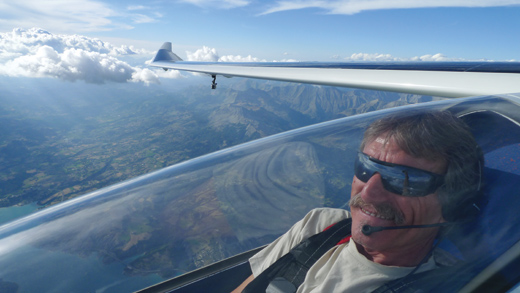
Ohlmann enjoys his record flight.
Even Rudolf Voit-Nitschmann, heading its development, had managed a grand flight in 2003. According to Deutsche Welle, “The Stuttgart University professor steered his glider, the Icaré 2, northwards. Five hours later, he landed at Jena, in the German state of Thuringia. He’d flown a distance of some 220 miles.”
It has been honored before, garnering the 1996 Berblinger Prize, awarded for its reported ability to take off and sustain flight on solar power alone without using its batteries. It picked up three big awards in 1997: a special achievement gold medal at the Experimental Aircraft Association fly-in, the Gold Daidalos Medal from the Braunschweig English Aero Club and the OSTIV (Organisation Scientifique et Technique du Vol à Voile) Prize.
Not incidentally, Eric Raymond and Klaus Ohlmann flew the second-place Green Flight Challenge e-Genius. With two experienced solar navigators in the same cockpit, the flight probably benefited from their knowledge of using low power to the greatest advantage.
Ohlmann’s recent flights are not the last of solar records. A huge Swiss airplane may soon sweep those away.
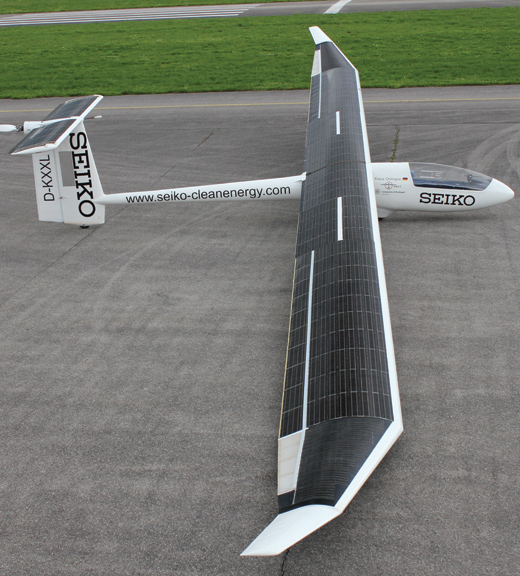
Icaré’s full complement of solar cells still falls short of the 12-kW motor’s demands.
Solar Impulse
Their web site sums up the extremes of the Solar Impulse:
The wingspan of an Airbus A340: 208 feet (63.40 meters).
The weight of a family car: 3520 pounds (1600 kilograms).
The power of a scooter: four 10-hp engines.
Visionary thinking…
Visionary enough to conceive an around-the-world flight in a solar-powered airplane, flown in stages by project founders Bertrand Piccard and André Borschberg, the team that designed, constructed and has flown this dragonfly-like behemoth, and has applied largeness in grand style.
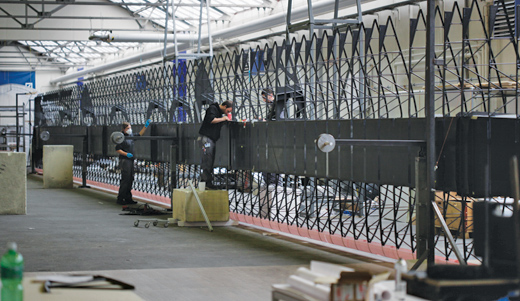
Trusses resemble those for a really big homebuilt, but in carbon fiber.
The project involves enthusiasm, innovation and audacity. Backed by groups such as Solvay, a chemical and plastics maker; the Schindler Group, a Swiss elevator and escalator manufacturer; Omega watches and Deutsche Bank, the Solar Impulse group also reaches out to smaller contributors. I purchased solar cell 1776 near the left wing aileron gap to honor my late wife, granddaughter and two high-school buddies, and perhaps to symbolize our future independence from fossil fuels. There are more cells, claimed and unclaimed—10,748 on the wing and 880 on the horizontal stabilizer—providing ample opportunity for people to memorialize loved ones or to simply encourage this adventure.
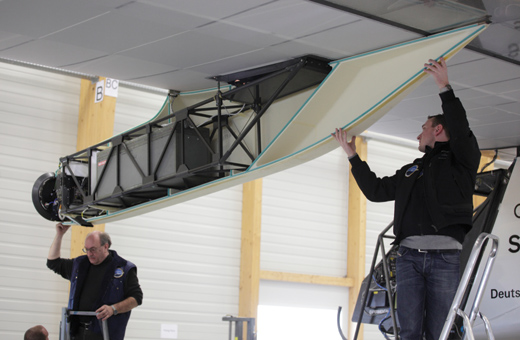
Workmen mount motor to mount, which also holds 70 batteries and the motor controller.
Bigger contributions can earn a guided tour of the airplane or even a “Your Name Here” opportunity to have your message emblazoned on the craft during future flights.
Structurally, HB-SIA’s interior landscape resembles that of a large model or homebuilt aircraft, but everything is gargantuan, and in place of steel tubing or wood, carbon fiber abounds in great trusses.
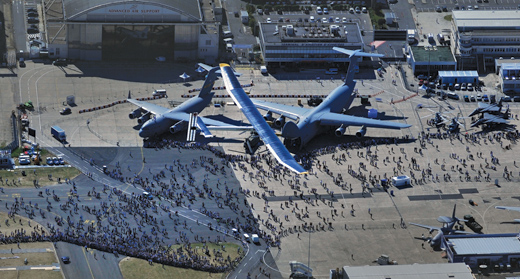
Solar Impulse overflies the U.S. Air Force at the Paris Air Show.
Its motors, Swiss industrial units, are geared to drive the 11.48-foot (3.5-meter) propellers at a stately 400 rpm. Power pods under the wings each house a motor, controller and 70 “accumulators,” or batteries.
The nearly 2152 square feet (200 square meters) of 12% efficient, 145-micron-thick solar cells provide each motor about 6 kilowatts, or 8 horsepower, to propel Solar Impulse. More efficient cells would weigh more and “penalize the airplane during night flight,” helping explain the necessary compromise.
Even the huge number of cells does not provide power at night, and a major part of the mission is eventually to fly night and day on long, slow cross-countries; 880 pounds (400 kilograms) of batteries, or “more than a quarter of the total mass of the plane,” carry the load during dark hours. This has already been demonstrated by a 26-hour, 10-minute, 19-second flight on July 7, 2010, with Borschberg at the controls.
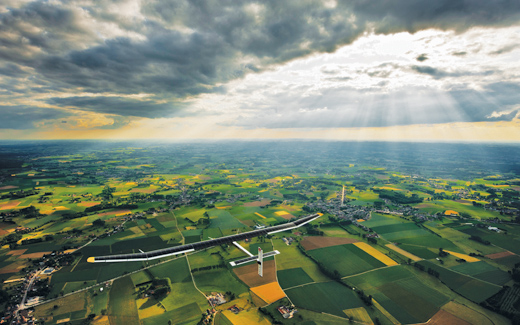
HB-SIA literally catches some Belgian rays.
This was followed by flights from home base in Payerne to Zurich and Geneva, where the big plane mingled with the Airbuses and Boeings on a more than equal footing. In June 2011, it went to Brussels, Belgium, overflying four countries on the way. Staying in Brussels for nearly a month, it was the centerpiece of meetings with European Union dignitaries before departing for the Paris Air Show. There, it was an early-morning sensation as it cruised the length of le Bourget’s main runway.
The team’s blogger captured the 10 a.m. flight. “Everyone held their breath. The propellers started turning and the plane was airborne in less than 10 seconds…The public was stunned. There was thunderous applause. After a week of enjoying fabulous displays, sometimes spectacular, but always noisy and polluting, Solar Impulse suddenly offered an astonishing alternative solution. HB-SIA soared above their heads slowly, majestically and silently.”
Structurally, aerodynamically, electrically and almost spiritually, Solar Impulse has captivated its home country, and videos on the web site show proud citizens gazing skyward as the stately craft glides quietly overhead. Work is now underway on a second, larger airplane that will be capable of that much-anticipated around-the-world flight.
All of these aircraft show ingenuity and dedication to an almost quixotic cause, and all have the ability to inspire those who see them. These are not the first designs to explore the sun’s ability to carry one aloft, or to fly on electric power. A future article will review those who started all of this, some more years ago than you might believe.
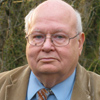
![]()
Dean Sigler has been a technical writer for 30 years, with a liberal arts background and a Master’s degree in education. He writes the CAFE Foundation blog and has spoken at the last two Electric Aircraft Symposia and at two Experimental Soaring Association workshops. Part of the Perlan Project, he is a private pilot, and hopes to get a sailplane rating soon.

